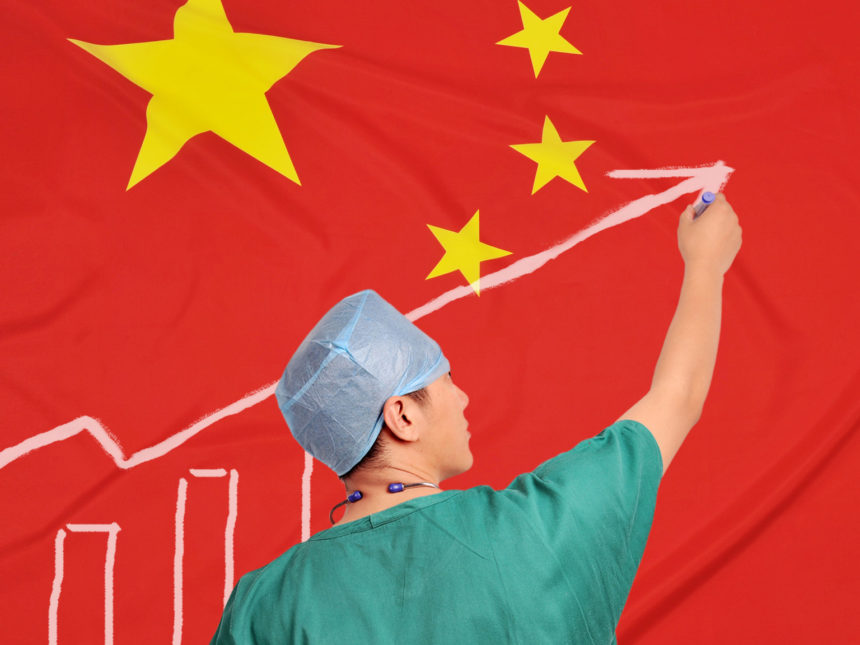Due to its size and growth potential, China’s healthcare market is one of the most attractive in the world for foreign investors. China surpassed Japan to become the world’s second-largest healthcare market in 2013 and continues to develop at double-digit rates. Indeed, it’s the fastest-growing healthcare market of all large emerging economies.
Recently in 2016, China’s healthcare market reached RMB 5,670.3 billion (853.7 billion USD), an increase of 12% in local currency when compared with that of 2015. Among others, the medical device market grew 20.1% to RMB 370 billion (56 billion USD) in 2016, while pharmaceutical and health products sales reached RMB 1,839 billion (277 billion USD), up 10.4 percent year-on-year.
Yet, the Chinese healthcare market is still relatively immature. Although healthcare expenditures in the country has increased more than four-fold, from RMB 1,096.6 billion (126.1 billion USD) in 2006 to RMB 4,634.5 billion (697.7 billion USD) in 2016, healthcare spending per capita is only around six percent of its GDP.
This compares unfavorably with the 17% the US, 10% in Japan and Europe, and the average nine percent in OECD countries. By 2020, China’s healthcare spending is expected to account for 6.5% to 7% of its total GDP, which is around 1 trillion USD. And by 2030, China’s healthcare market is targeted to reach RMB 16,000 billion (around 2 trillion USD), as it is stipulated in the Plan of Health China 2030 released by the State Council in October 2016. Every health sector – from pharmaceuticals to medical devices – will have more opportunities.
While many market factors are positive, foreign investors must study the rapidly-changing regulatory environment for the industry. Healthcare reform in China started in 2009 and is still ongoing, often with different goals each year. We summarize the major 2017 reforms below.
Investment Opportunities
The country’s market for healthcare will continue to grow with China’s rapidly aging population and rising affluence, and policymakers are aware. The 2017 reforms will substantially reshape China’s healthcare industry.
There are other policies that may have important implications in the healthcare sector. For example, the latest Catalogue of Industries for Guiding Foreign Investment adds intelligent medical rescue devices to the encouraged category, meaning that they benefit from special government incentives. In addition, the revised Medicine List for National Basic Medical Insurance, Work-Related Injury Insurance, and Maternity Insurance adds more than 300 new drugs into the insurance funded medicine list, which means more demand for these drugs.
In addition, the government endeavors to expand the hierarchical diagnosis system to 85% of all its cities, which should substantially increase demand from primary medical institutions for diagnosis equipment, household equipment for chronic diseases, medical rehabilitation apparatus, portable medical equipment, as well as medical imaging equipment.
In sum, 2017 has seen continuous, robust growth, and dynamic regulatory changes in healthcare market. With the government aiming to ensure all citizens have access to basic healthcare services by 2020, multinational companies should sit up and pay attention.



Leave a Reply